AMD’s 5 GHz Turbo CPU in Retail: The FX-9590 and ASRock 990FX Extreme9 Review
by Ian Cutress on August 9, 2014 8:00 AM ESTASRock 990FX Extreme9 BIOS
For those that have followed our Z87 and Z97 BIOS coverage, the ASRock BIOS for the 990FX Extreme9 falls very much on the side of Z87, which makes sense as the platform will probably not be seeing many updates, if any, for the foreseeable future. The main screen uses white text on a starry background, with the selected option very clearly defined.
In this main screen we have details of the motherboard name, the BIOS version, the CPU installed, the CPU Speed, the DRAM installed, the per-module density and the current speed of each module. Other information that would be good to have includes the main system voltages, temperatures and fan speeds. Note that ASRock has not yet implemented a system that contains this information across every BIOS screen, unlike some of their competition. On this screen is also an ‘Active Page on Entry’, useful for overclockers that want the BIOS to skip straight into the OC Tweaker menu.
The OC Tweaker menu, as the name suggests, has the overclocking options. ASRock like to add in some automatic overclock options, and here we get the choice from a 5% to a 50% overclock:
Typically the higher overclocks would be outlined in red to indicate an extreme overclock, but ASRock does not do that here. The rest of the OC Tweaker menu has the CPU configuration settings, DRAM Timing options and Voltage configuration. Load Line Calibration is a single option in the voltage section, and the DRAM Timing Control is a separate menu item for memory sub-timings:
The Advanced tab contains options for enabling/disabling controllers, adjusting SATA modes and implementing some power saving features. The Tool menu next is where ASRock has their more interesting features, such as System Browser that gives an overview of the motherboard and tells the user what is installed:
The Online Management Guard feature displays a timetable for the week and allows the user to disable the network features. One of the major purposes of this feature is for adults to restrict their children’s use of the internet at odd hours of the day.
The Dehumidifier function keeps fans enabled after the system has switched off in order to equilibrate the temperature inside the case with the temperature outside the case. In the event of warm, moist air in the case that cools in the evening, in humid climates this may cause condensation, hence this feature. There are also menu options to save user profiles within the BIOS underneath this setting.
The Fan Controls are how ASRock used to do them, in terms of ‘levels’, with the higher the level indicating how quickly the CPU fan power would ramp up. Some of the headers have the option of tying the fan power to the CPU temperature, meaning that if the CPU temperature rises above a value, the fan is placed on full speed until the target temperature is reached.
The BIOS finishes up with boot options and security. One missing feature from ASRock BIOSes is a boot override feature, allowing for a one-time boot from within the BIOS.
ASRock 990FX Extreme9 Software
The software for the Extreme9 is centered around the ASRock Extreme Tuning Utility, or AXTU for short. AXTU used to be the main interface, until A-Tuning came about for Intel’s 8-series motherboards, but due to the age of the motherboard (or perhaps incompatibilities) this software has not been upgraded.
The screen that pops up first with AXTU is the Hardware Monitor interface. This shows the CPU speeds, base frequencies and multipliers, as well as the fan speeds, temperatures and voltages. Two key bits of information missing are the CPU installed and the motherboard which is being used.
AXTU also is part of the fan control:
The fan controls here are similar to that in the BIOS, relying in the ‘level’ system to determine the gradient at which the fan speed is ramped up. Users can select a target temperature which will put the fan at full speed when the CPU is above the target.
The overclocking interface offers several simple options, although no automatic overclocking setups. Here we can adjust the base frequencies, the multipliers and the voltages, although nothing along the lines of load-line calibration.
AXTU also provides an interface to save the BIOS and some power saving features, but also XFast RAM. This feature allows the user to partition off some of the memory into a RAMDisk, and AXTU will also manage some caching options in order to speed up some of the operating system functions.
While ASRock has dropped XFast USB with the latest Intel 9-series motherboards, the software is here on the Extreme9 and implements newer USB protocols to increase peak transfer speeds at the expense of latency. In our copy tests, the XFast feature does provide a tangible benefit, although the feature is limited to one USB device at a time.
XFast LAN is a licensed and skinned version of cFos, which allows for software manipulation of network priority.



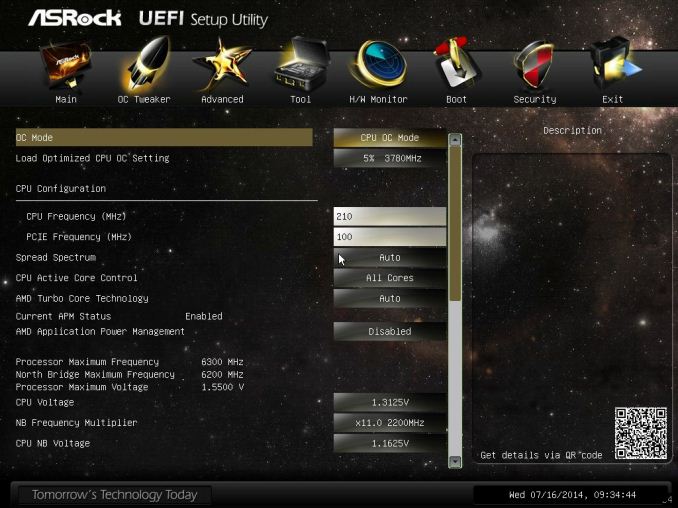
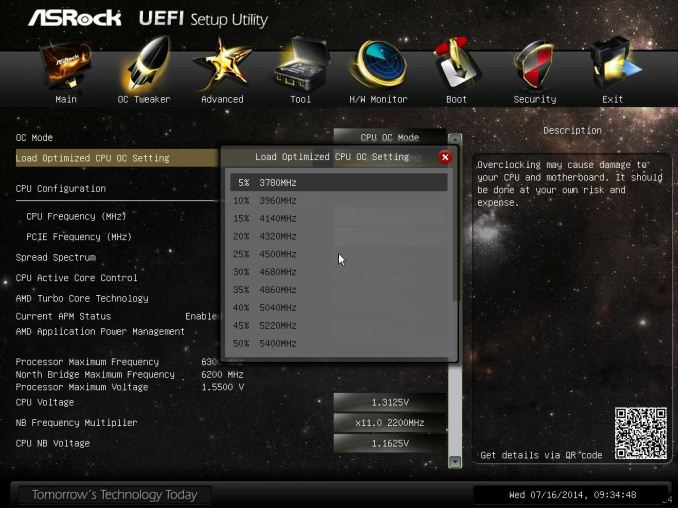
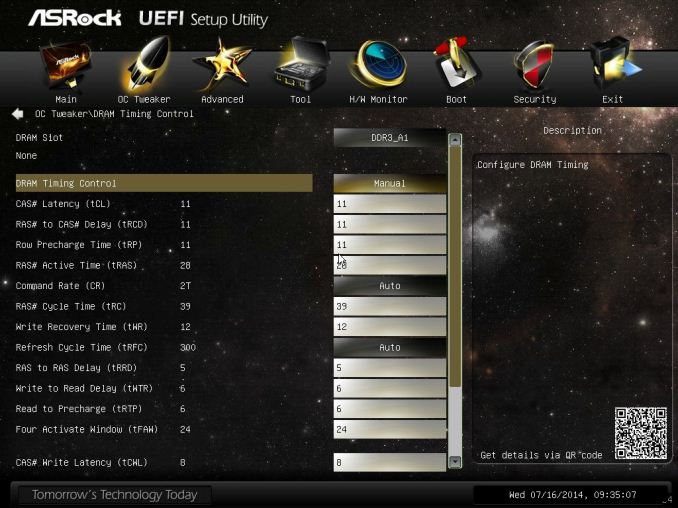

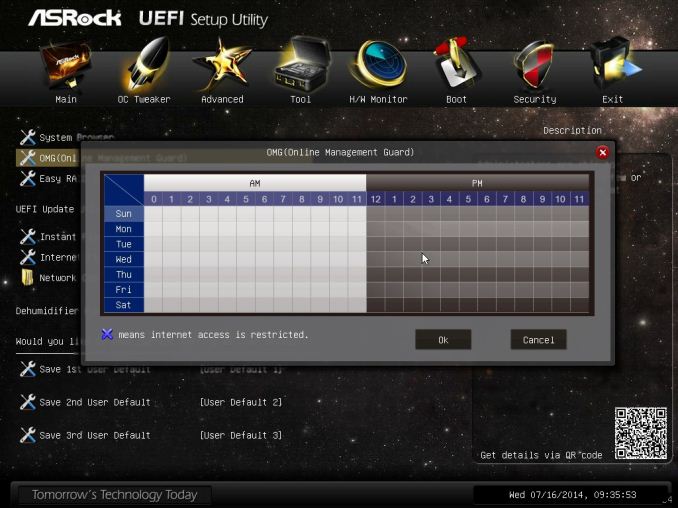

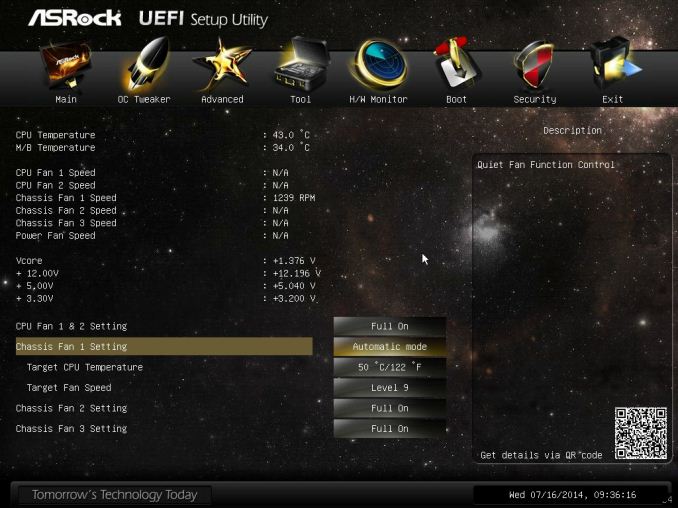







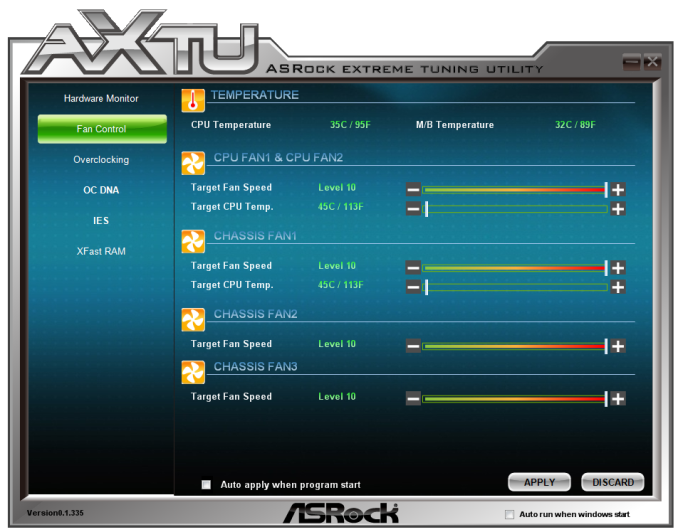
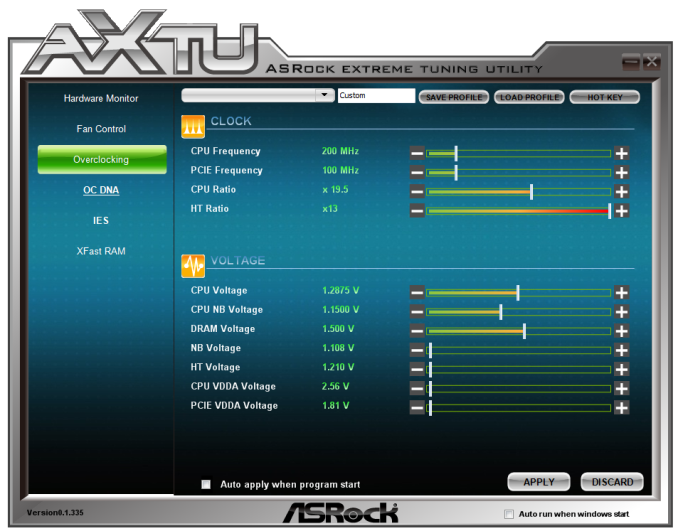

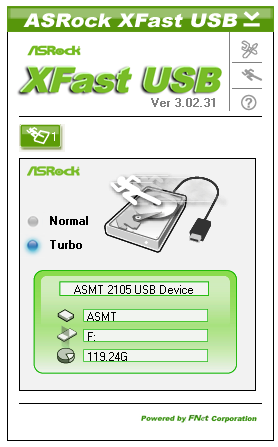
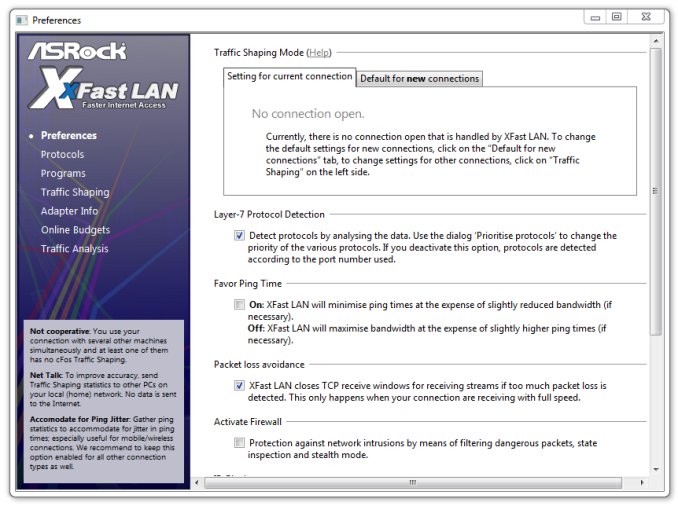














146 Comments
View All Comments
just4U - Sunday, August 10, 2014 - link
In my opinion the best cpu AMD has right now is A8 7600 coming in at $120 CAD. I see no reason to go Intel i3 as long as that puppy is there. (A argument can be made for Intel's AE 3x) The downside for AMD is I also see no reason why anyone should buy a more expensive CPU/APU from them.. their A-10 is priced in the same range as lower I5's which is a bit of a head shaker and their AM3+ is getting long in the tooth with no refresh.I could see a new FM2+ FX branded cpu priced at the tier their offering their A-10s for as it would bring something more to the table.. but they do really have to do something about single threaded performance. Even if it wasn't being used as much in programs their line-up takes a beating in reviews which is bad optics for them and leads to people like us (who read these things..) to suggest other alternatives for people buying/building a system.
FightApathy - Sunday, August 10, 2014 - link
237W operational power consumption. This is just.... terrible for a 2014 CPU. And what is even worse, is that i7 with 1/3 of TDP performs as well or even better. AMD has to stick to APUs.KAlmquist - Sunday, August 10, 2014 - link
"One could speculate that releasing the next generation of FX-85xx might put them behind the FX-9590 in performance, or that the fabrication process was not suitable for a quad-module CPU with the new architecture improvements."According to the Steamroller review, the 28nm bulk process that Steamroller was designed for won't clock as high as the 32nm SOI process that Piledriver uses. So an 8 core Steamroller processor would execute more instructions per clock, but would be clocked at least 400 Mhz slower, and as a result would be only marginally faster than Piledriver.
AMD is expecting to achieve another boost in instructions per clock with Excavator, but unless something has changed they plan to synthesize Excavator using software that minimizes die area at the cost of clock speed, so I'd expect Excavator to do more to improve performance per watt than to improve absolute performance.
After Excavator comes a completely new design, which we can hope will be a major improvement over the bulldozer derivatives.
mathewmichal7 - Sunday, August 10, 2014 - link
Draft your credit agreement is an excellent example of an innovative style of marketing. There is a provision for the lender to get cash advance check their debtors. He takes comfort in check on the day of your salary. Undoubtedly reduces the possibility of non-payment money and is beneficial for the creditor and the debtor. Delinquent and insolvent are not left disappointed by the money lenders. Your loan application forms become a matter of serious consideration if they manage to impress your money lenders for their current financial situation. The number of your credit profile does not control the situation and creditor left unchecked.http://www.12monthloansmoney.co.uk
duploxxx - Monday, August 11, 2014 - link
funny to read all these replies. makes you wonder what avarage age and technology knowledge is of these tech sites.....All complaining about useless AMD and process tech but yet they don't understand that these own consumers are the ones to blame, they buy the jingle and bells and the marketing buzz... recent review on anandtech showed enough what was best to buy, yet most decide to buy the other marketing dominant brand as if there all day tasks are faster since the benchmarks show few percentage faster finished task... buyers need to blame themselve for there own stupid decisions. Want a fast system? get rid of Microsoft garbage. OEM-marketing kill the competition and consumers are the victim but they still dont understand it. (useless chipset revisions, socket changes, design rules like in ultrabook space and centrino, etc, etc..). poor consumers.
From a tech site you indeed need to review such a CPU, its mandatory but i don't think it gets the honor for what it supposed to be, anyhow there will be only few to sell since it has no reason to exist becide the mythical part.
I remember the days of pentium D and extreme, no reason at all to exist yet 1000's of buyers just for the brand....
duploxxx - Monday, August 11, 2014 - link
since no edit button :) thx anandtech asking that already for more then 10yI meant age and knowledge of the readers of course
Klimax - Monday, August 11, 2014 - link
Lovely nonsensical post. Including out of date bashing of Microsoft. 90s called, they want your nonsense back.Mugur - Monday, August 11, 2014 - link
There is still room for AMD in my home. I have 2 SB Core i3s for the gaming machines and I've just replaced an 80W Phenom II HTPC with an Intel NUC 2820. But my server (currently an Athlon II X4) will be soon an A10-7800 at 45W on a FM2+ with 8 SATA board...jgarcows - Monday, August 11, 2014 - link
How did you manage to post a review of a chip with a bundled retail liquid cooling system and not post a single picture of the liquid cooling system? How easy was it to install, what size openings are needed on the case, etc...LemmingOverlord - Monday, August 11, 2014 - link
May I suggest:a) some impressions on the liquid cooling? (+pics)
b) underclocking the CPU (and lowering voltage), then map that to power v. performance curves for the same set of benchmarks you ran... just to see how big a drop it would be in wattage.